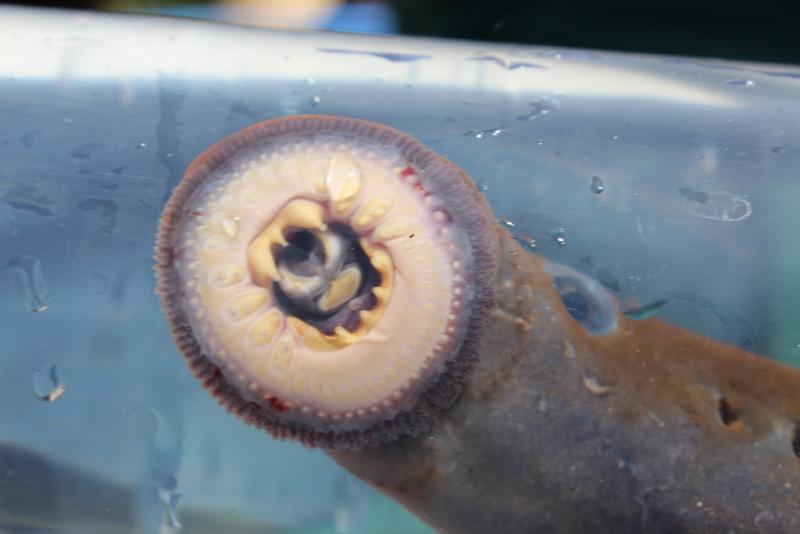
Tim Hill Washington Department of Ecology
By Rae Ellen Bichell, KPLU
Jawless and eel-like with concentric rings of teeth, the Pacific lamprey’s unsavory looks may be one reason why populations have declined. Now, some people are taking charge of restoring the fish.
While it’s an important source of food for juvenile salmon and contribute to rivers the way earthworms do to soil, the Pacific lamprey is not exactly a charismatic animal.
“When I first saw these fish, I thought, ‘My gosh, it looks like that Sarlacc mouth in Return of the Jedi.’ It just looks like something that’s going to swallow you up,” said Sean Connolly, a biologist with the U.S. Fish and Wildlife Service in Portland, and collaborator on a 1o-year project to restore the fish. (In case you were wondering, a Sarlacc mouth is a gaping abyss of tentacles and teeth.)
“On the flip side of it, it has these incredible blue eyes. It has this look of something remarkable you’ve never see. And when you study these organisms and see them, they actually look quite vulnerable,” Connolly said.
They are vulnerable. In the past few decades, regional populations plummeted, hitting an all-time low in 2010. In the ’60s, people decided the lamprey was an eel-like river vermin worthy of extermination.
“Back in the ’60s and ’70s, people dropped rotenone in the rivers and streams to try to kill all the trash fish. Because that’s what they’re considered: trash fish,” said Patrick Luke, a biologist with the Yakama Nation Fisheries. “But at the same time, they tried to increase the production of trout, salmon, sturgeon, those types of species.”
As big hydropower project began to come online in the northwest, dams were problematic, too.
“When folks were building those facilities and thinking about passage for salmon and steelhead, they weren’t really thinking about a fish like a lamprey, which can’t jump,” Connolly said. “And so what we’ve seen is some pretty substantial declines, over time and definitely historically.”
Those declines were sharp enough to earn the lamprey the nickname “the lost fish.” Emily Washines, who works with the Yakama Nation Fisheries, says she remembers when they they started disappearing from the dinner table.
“It would be the equivalent, I guess, of going to a Mariners game and not having hot dogs anymore,” Washines said of the lamprey’s absence. “It was so much a part of our ceremonies, so much intertwined in our lives that to have the numbers sharply decrease, just within my generation, is so noticeable.”
The Pacific lamprey’s invasive cousin, the Sea lamprey, hasn’t helped. It has marauded Great Lakes waters for a while now. But here in the Pacific Northwest, where the fish is native, the larvae feed juvenile salmon and steelhead, rather than feeding on them. That’s one reason why tribes and government agencies have funded the Pacific Lamprey Restoration Plan, which involved releasing buckets of them into Yakama streams. It’s funded by government grants and through the 2008 Columbia Basin Fish Accords with Bonneville Power Administration.
“Just think what the earthworms do on land,” said Patrick Luke. “These lamprey larvae do the same thing in the substrates of rivers and streams: they aerate, they fix nutrients for microbes and organisms that feed salmon and other aquatic organisms.”
His goal is to get the fish populations back up, though maybe not to the level that earned them the nickname “Columbia River hot dog.”
